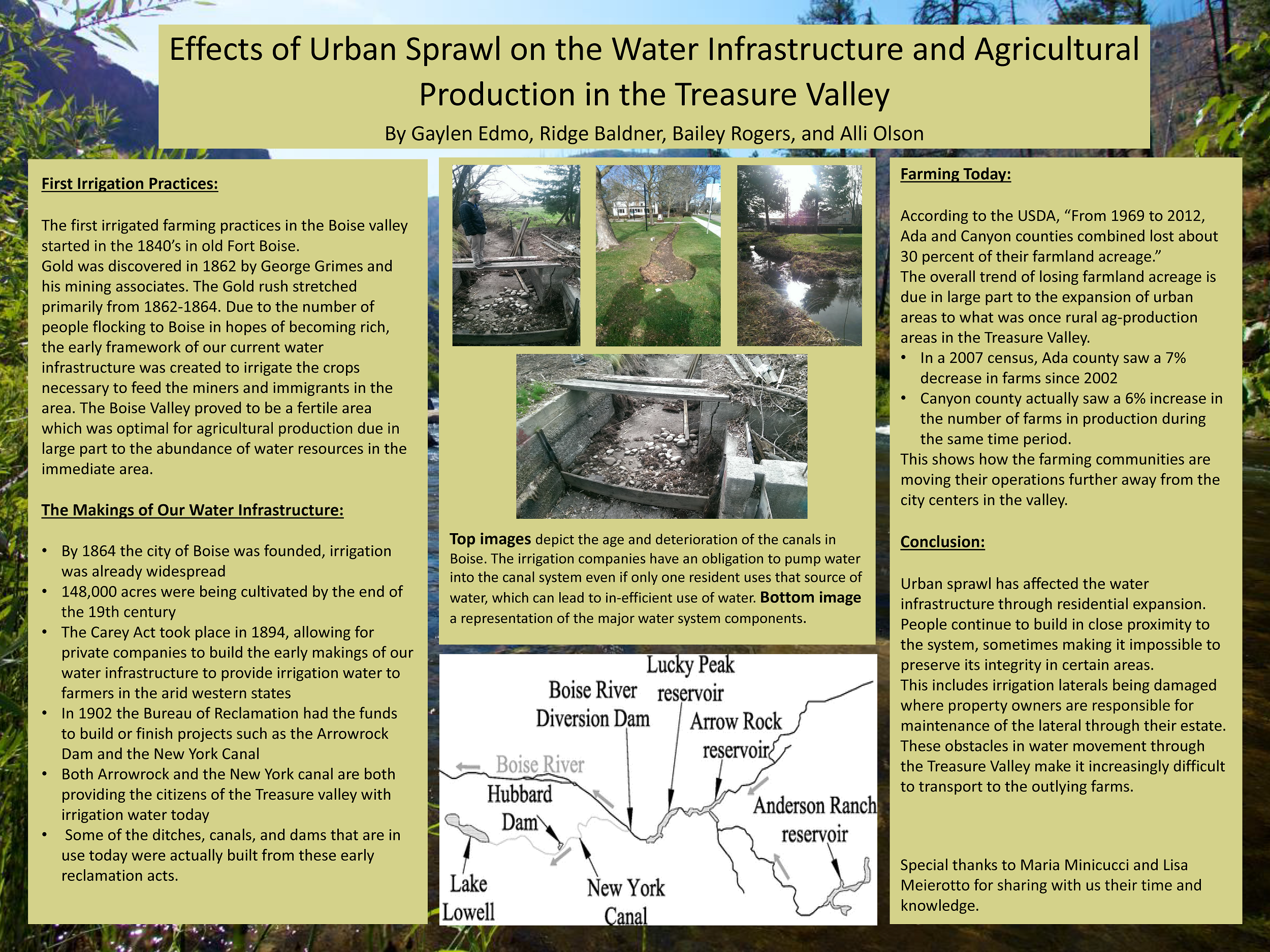Effects of Urban Sprawl on the Water Infrastructure and Agricultural Production in the Treasure Valley

By Gaylen Edmo, Ridge Baldner, Bailey Rogers, and Alli Olson
First Irrigation Practices
The first irrigated farming practices in the Boise valley started in the 1840’s in old Fort Boise. Gold was discovered in 1862 by George Grimes and his mining associates. The Gold rush stretched primarily from 1862-1864. Due to the number of people flocking to Boise in hopes of becoming rich, the early framework of our current water infrastructure was created to irrigate the crops necessary to feed the miners and immigrants in the area. The Boise Valley proved to be a fertile area which was optimal for agricultural production due in large part to the abundance of water resources in the immediate area.
The Makings of Our Water Infrastructure
- By 1864 the city of Boise was founded, irrigation was already widespread
- 148,000 acres were being cultivated by the end of the 19th century
- The Carey Act took place in 1894, allowing for private companies to build the early makings of our water infrastructure to provide irrigation water to farmers in the arid western states
- In 1902 the Bureau of Reclamation had the funds to build or finish projects such as the Arrowrock Dam and the New York Canal
- Both Arrowrock and the New York canal are both providing the citizens of the Treasure valley with irrigation water today
- Some of the ditches, canals, and dams that are in use today were actually built from these early reclamation acts.
Farming Today
According to the USDA, “From 1969 to 2012, Ada and Canyon counties combined lost about 30 percent of their farmland acreage.” The overall trend of losing farmland acreage is due in large part to the expansion of urban areas to what was once rural ag-production areas in the Treasure Valley.
- In a 2007 census, Ada county saw a 7% decrease in farms since 2002
- Canyon county actually saw a 6% increase in the number of farms in production during the same time period.
This shows how the farming communities are moving their operations further away from the city centers in the valley.
Conclusion
Urban sprawl has affected the water infrastructure through residential expansion. People continue to build in close proximity to the system, sometimes making it impossible to preserve its integrity in certain areas. This includes irrigation laterals being damaged where property owners are responsible for maintenance of the lateral through their estate. These obstacles in water movement through the Treasure Valley make it increasingly difficult to transport to the outlying farms.
Special Thanks
Special thanks to Maria Minicucci and Lisa Meierotto for sharing with us their time and knowledge.